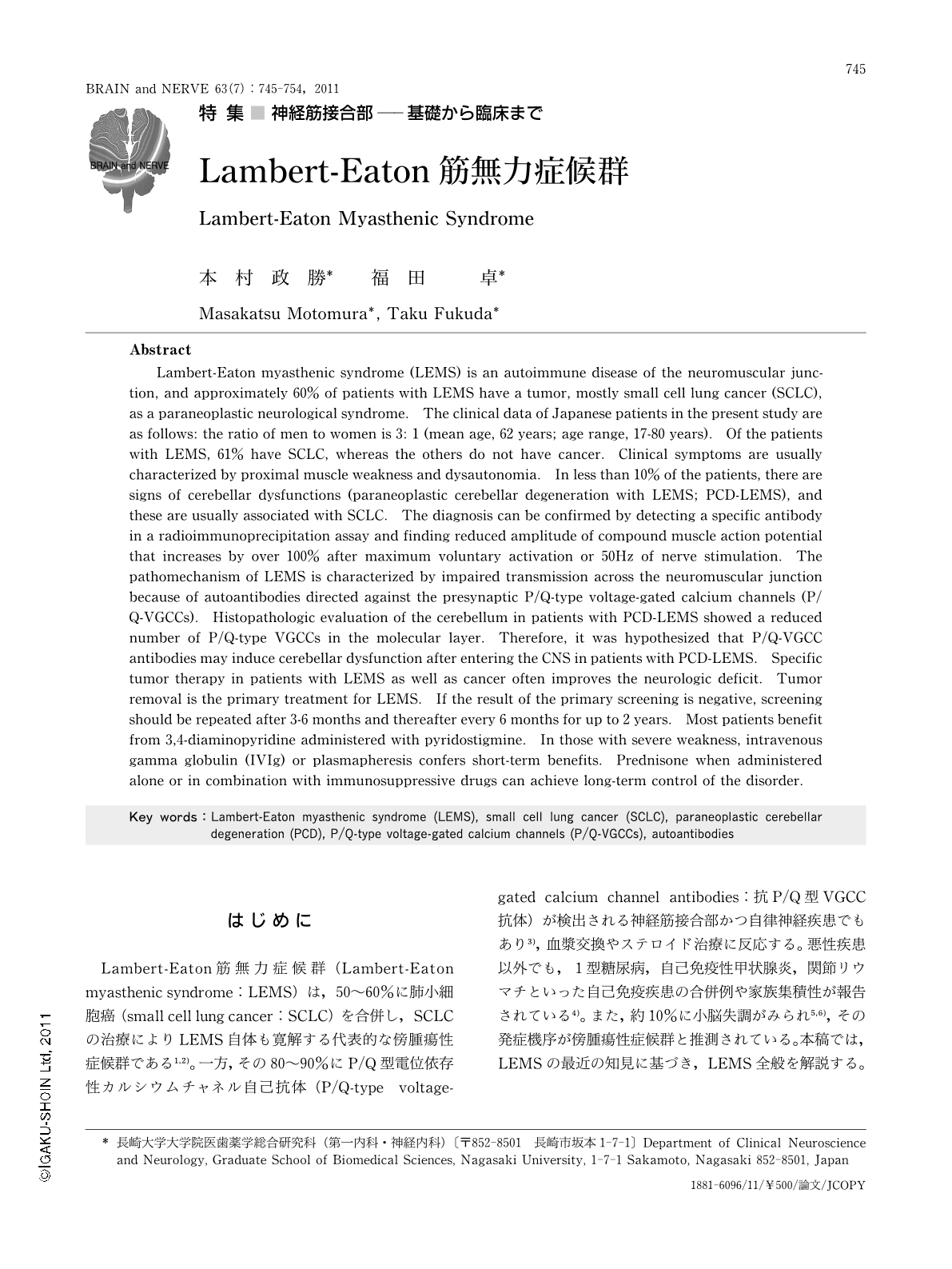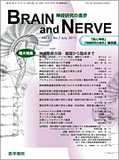Japanese
English
- 有料閲覧
- Abstract 文献概要
- 1ページ目 Look Inside
- 参考文献 Reference
はじめに
Lambert-Eaton筋無力症候群(Lambert-Eaton myasthenic syndrome:LEMS)は,50~60%に肺小細胞癌(small cell lung cancer:SCLC)を合併し,SCLCの治療によりLEMS自体も寛解する代表的な傍腫瘍性症候群である1,2)。一方,その80~90%にP/Q型電位依存性カルシウムチャネル自己抗体(P/Q-type voltage-gated calcium channel antibodies:抗P/Q型VGCC抗体)が検出される神経筋接合部かつ自律神経疾患でもあり3),血漿交換やステロイド治療に反応する。悪性疾患以外でも,1型糖尿病,自己免疫性甲状腺炎,関節リウマチといった自己免疫疾患の合併例や家族集積性が報告されている4)。また,約10%に小脳失調がみられ5,6),その発症機序が傍腫瘍性症候群と推測されている。本稿では,LEMSの最近の知見に基づき,LEMS全般を解説する。
Abstract
Lambert-Eaton myasthenic syndrome (LEMS) is an autoimmune disease of the neuromuscular junction,and approximately 60% of patients with LEMS have a tumor,mostly small cell lung cancer (SCLC),as a paraneoplastic neurological syndrome. The clinical data of Japanese patients in the present study are as follows: the ratio of men to women is 3: 1 (mean age,62 years; age range,17-80 years). Of the patients with LEMS,61% have SCLC,whereas the others do not have cancer. Clinical symptoms are usually characterized by proximal muscle weakness and dysautonomia. In less than 10% of the patients,there are signs of cerebellar dysfunctions (paraneoplastic cerebellar degeneration with LEMS; PCD-LEMS),and these are usually associated with SCLC. The diagnosis can be confirmed by detecting a specific antibody in a radioimmunoprecipitation assay and finding reduced amplitude of compound muscle action potential that increases by over 100% after maximum voluntary activation or 50Hz of nerve stimulation. The pathomechanism of LEMS is characterized by impaired transmission across the neuromuscular junction because of autoantibodies directed against the presynaptic P/Q-type voltage-gated calcium channels (P/Q-VGCCs). Histopathologic evaluation of the cerebellum in patients with PCD-LEMS showed a reduced number of P/Q-type VGCCs in the molecular layer. Therefore,it was hypothesized that P/Q-VGCC antibodies may induce cerebellar dysfunction after entering the CNS in patients with PCD-LEMS. Specific tumor therapy in patients with LEMS as well as cancer often improves the neurologic deficit. Tumor removal is the primary treatment for LEMS. If the result of the primary screening is negative,screening should be repeated after 3-6 months and thereafter every 6 months for up to 2 years. Most patients benefit from 3,4-diaminopyridine administered with pyridostigmine. In those with severe weakness,intravenous gamma globulin (IVIg) or plasmapheresis confers short-term benefits. Prednisone when administered alone or in combination with immunosuppressive drugs can achieve long-term control of the disorder.

Copyright © 2011, Igaku-Shoin Ltd. All rights reserved.


